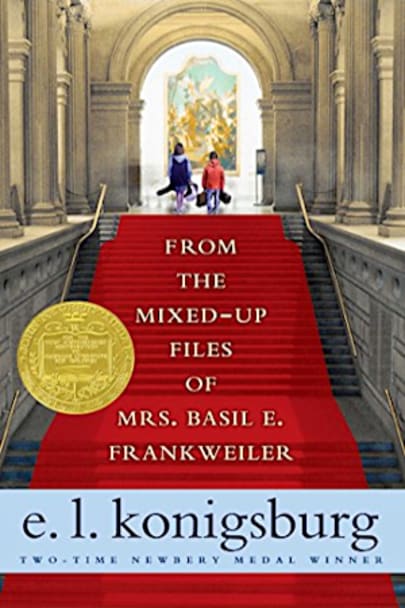When Claudia decided to run away, she planned very carefully. She would be gone just long enough to teach her parents a lesson in Claudia appreciation. And she would go in comfort-she would live at the Metropolitan Museum of Art. She saved her money, and she invited her brother Jamie to go, mostly because be was a miser and would have money. Claudia was a good organizer and Jamie bad some ideas, … ideas, too; so the two took up residence at the museum right on schedule. But once the fun of settling in was over, Claudia had two unexpected problems: She felt just the same, and she wanted to feel different; and she found a statue at the Museum so beautiful she could not go home until she bad discovered its maker, a question that baffled the experts, too. The former owner of the statue was Mrs. Basil E. Frankweiler. Without her-well, without her, Claudia might never have found a way to go home.
more



If I ever run away from home, I think I’ll do like these kids and head for a museum, or even better yet, a library. That will make it easier to read everything else ever written by Konigsberg!
It’s a great adventure book but takes place in a city setting rather than a wilderness of some kind. Enjoyed reading it as a young teen/preteen and look forward to reading it again as an adult.
E. L. Konigsburg is my favorite children’s author. I have read this title previously for a Children’s Literature class, but I wanted something refreshing to read again while on vacation, so I decided to return with Claudia to the museum. The 20th century Newbery Winners were certainly more clever, better written, and less political than are today’s “message” books. I regret that Konigsburg is no longer with us, but at least her wonderful treasures are.
Set in the New York’s Metropolitan Museum of Art, Claudia and younger brother Jamie spend a glorious adventure tooling around the museum trying to solve the mystery of a recently acquired statue whose authorship is questionable. This leads them to the statue’s previous owner, Mrs. Basil E. Frankweiler, where Claudia conducts research. As a public historian working in an archives this book has resonated with me since I first read it in the late 1970s as a teen. I enjoy its timelessness, though this is its 50th anniversary.